News
The Connectivity Benefits of Rapid Deploy for Ports
The Connectivity Benefits of Rapid Deploy for Ports
Marine port environments need strong, consistent wireless connectivity to power their day-to-day operations.
Unfortunately, that urgent need is why so many terminal operators are frustrated with their current network infrastructure. Whether they’ve tried LTE, private LTE, or other Wi-Fi implementations, many of these environments have been forced to rely on wireless connectivity solutions that impose stark limitations on day-to-day operations.
After getting burned with ineffective Wi-Fi implementations in the past, many marine terminals have concluded that LTE and private LTE are the best available solution to their connectivity issues.
That’s why we’re eager to spread the word about our Rapid Deploy family of products, including Rapid Sky, which deliver wired and wireless connectivity customized to your terminal’s specific geography and unique connectivity requirements.
“If you need to set up an office space within your facility, for example, our infrastructure can provide gigabit connectivity almost anywhere, and at a minimal cost. In contrast, cellular solutions are restrictive: you’re limited by modem options, the expense of adding new SIM cards, and the inability to deliver comparable bandwidth or capacity. Our solution is not only more agile but also offers far greater capability and flexibility.”
James Crooks, Senior Solutions Architect at Buckeye Mountain
Read on to learn more about the connectivity challenges faced by today’s marine ports—and how Buckeye Mountain’s Rapid Deploy products can deliver a positive impact for your port operations.
The Current Options for Wi-Fi Connectivity in Ports
In recent years, marine terminals have made significant investments into mobile technologies that improve communication and streamline operations across the port.
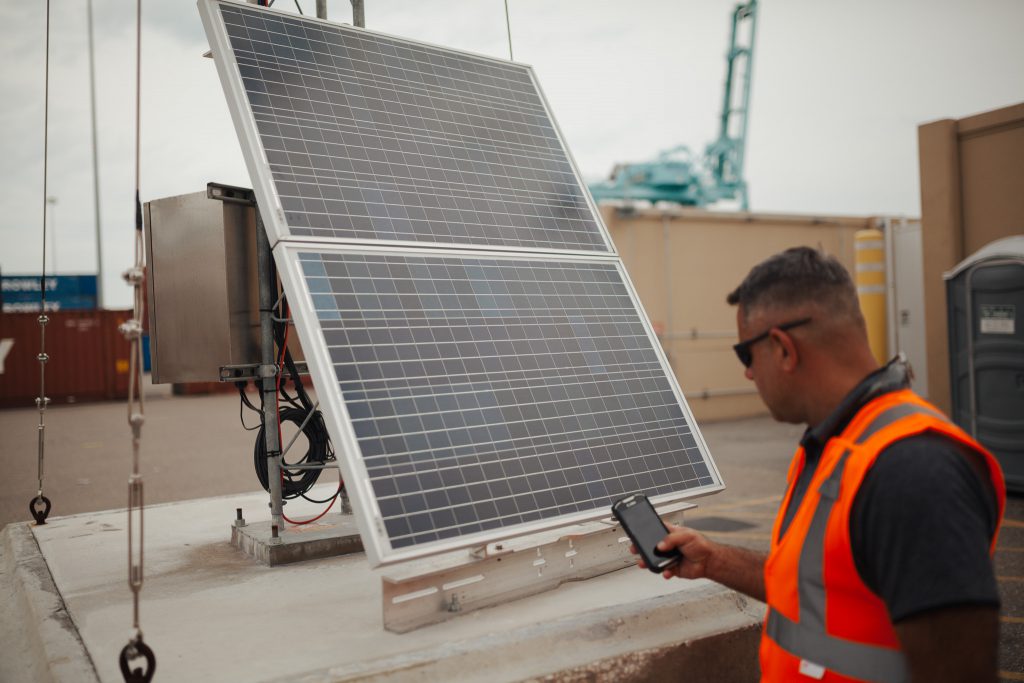
Tablet devices and other Wi-Fi enabled terminal hardware now play an integral role in almost every aspect of field operations—which means your entire terminal ops footprint can now be disrupted by connectivity issues.
“If the users who are on the ground can’t effectively communicate with an application that’s moving data or transactions, for example, it puts a port dead in the water until we get the issue resolved,” says Crooks.
Regardless of whether marine terminals are reliant on LTE or existing Wi-Fi infrastructure to deliver wireless connectivity, they’re likely dealing with these issues on a constant basis. Each takes a different approach to delivering port connectivity—but the end result is often the same.
LTE carriers
Both LTE and private LTE carriers deliver wireless connectivity using the same network infrastructure used for wireless consumers. Many marine terminals have been using LTE carriers for years because of its accessibility and ease of deployment: unlike Wi-Fi solutions, LTE doesn’t require any equipment installation, and it can still offer decent speeds and connectivity relative to other options.
The limitations of LTE come into play when relying on this technology to support mission-critical operations. The bandwidth limitations of LTE often can’t meet the throughput requirements of a large marine terminal. Large uploads and data transfers can be slow to execute through an LTE carrier—and these delays can create or exacerbate operational inefficiencies that wireless connectivity was meant to address.
There’s also the issue of signal availability in a port environment with tall stacks of shipping containers. If wireless devices are in a position where cellular signals are blocked by containers or other obstacles, wireless connections may be impeded or lost.
Wi-Fi
Compared to the bandwidth limitations of LTE, Wi-Fi’s greatest strength is its ability to deliver excellent bandwidth, throughput, and availability in a port environment. Unlike LTE and private LTE, where ports are dependent on shared infrastructure they don’t own or control, Wi-Fi infrastructure is exclusively owned by your property.
“That’s the beauty of Wi-Fi: you control that space, you control that connection, and you’re able to pivot when you see constraints and connectivity issues,” says Crooks. “You can’t do that with LTE or other technologies. You’re pretty much reliant on them to provide the service.”
James Crooks, Senior Solutions Architect at Buckeye Mountain
But conventional Wi-Fi infrastructure comes with critical disadvantages that limit the inherent flexibility of this technology. Along with the prohibitive cost of installing the necessary infrastructure, for example, access points are installed at fixed locations. This makes it difficult for Wi-Fi connectivity to adapt to dynamic outdoor environments.
With our Rapid Deploy family of products, we’ve created a new approach to wireless infrastructure that gives marine terminals the best of both worlds: high-speed, high-throughput Wi-Fi that minimizes installation costs and maximizes connectivity across your terminal. This is backed up by a high speed, exceptionally reliable fiber in the air backhaul that removes the need to implement physical fiber throughout your terminal.
Rapid Deploy for Ports: A Reliable Solution for Terminal Connectivity
Rapid Deploy is an established solution in leading wireless connectivity for rail and intermodal terminals. The operational advantages of this technology translates seamlessly to port environments—and it could be exactly what your terminal or property needs to elevate the performance of your marine yard operations.
What is Rapid Deploy?
Rapid Deploy is Buckeye Mountain’s patented approach to deploying consistent, scalable Wi-Fi infrastructure in even the most challenging outdoor environments using ultramodern technology.
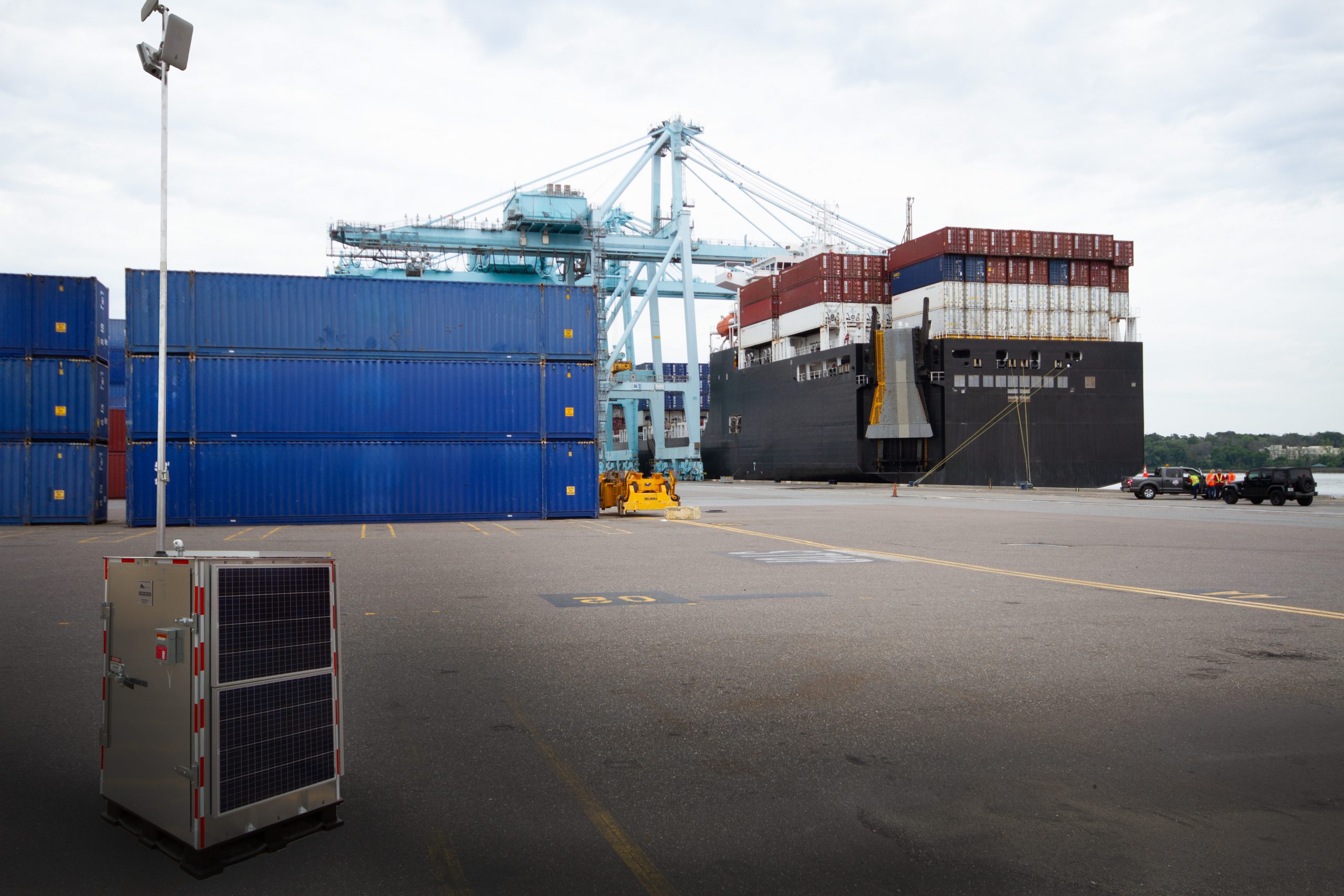
A cornerstone of Buckeye Mountains Rapid Deploy suite of products is the development and deployment of not only wireless design, implementation, industry leading monitoring and management services. Our key focus on providing guaranteed connectivity for our customers made us also look at providing power solutions to all our products including options for solar powered install points and battery backup systems that far exceed typical providers capability.
Our Rapid Deploy family of products features a wide range of standalone solutions to meet the connectivity needs of any outdoor environment. From high-mast towers to portable connectivity in remote and emergency scenarios, our autonomous solutions can be unified in a comprehensive Wi-Fi infrastructure that is configured to your property’s specific needs.
The Buckeye pledge to our customers also includes our above and beyond style of network monitoring and maintenance. Our Rapid Deploy networks are monitored and maintained by trained professionals 24 hours a day, 7 days a week. Often, we can alert our customers of anomalies or potential problems before they are aware of them from an operational perspective. The key to our success has always been the ability to proactively act to minimize downtime to your operations.
“Our solutions are tailored to each customer’s unique environment,” says Crooks. “We’re not an off-the-shelf company. We conduct on-site physical and RF surveys to ensure that our network designs are customized to the specific geographic location and the customer’s needs. This approach ensures that their investment is optimized, rather than relying on a one-size-fits-all solution.”
Buckeye’s Suite of Rapid Deploy Products
To meet individual environmental requirements, Buckeye Mountain often deploys a mix of Rapid Deploy solutions tailored to the customers’ needs. Our solutions most applicable to port environments include the following:
RapidSky
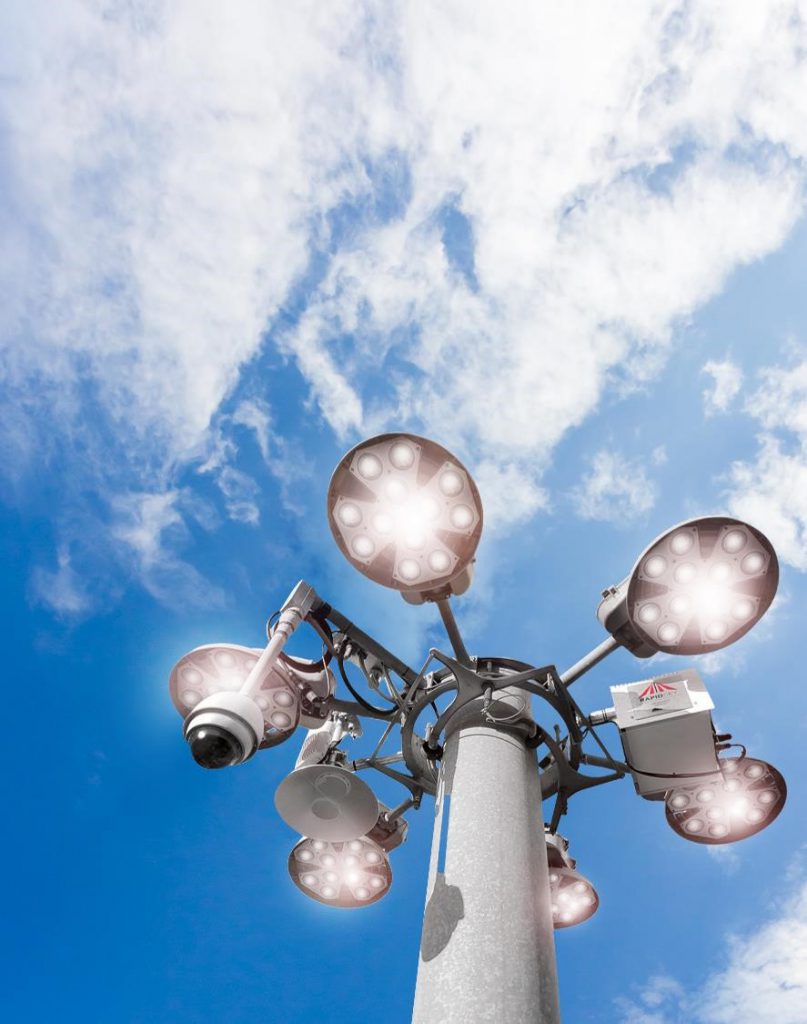
Developed specifically for the unique demands of marine terminal environments, RapidSky delivers Wi-Fi connectivity from light rings, or existing high-mast lights, mounted 100 feet in the air. By installing an access point high above container stacks in your yard, RapidSky’ s unique antenna design ensures reliable Wi-Fi coverage that overcomes the risk of stack interference in a dynamic environment. Coupled with our approach to use a high speed backhaul to provide a multi-gigabit fiber in the air backbone that translates into added reliability and performance.
RapidSky can be deployed alongside other Wi-Fi connectivity solutions to ensure that every square foot of your terminal enjoys consistent Wi-Fi access, reducing the risk of operational disruptions due to signal loss.
RapidOne
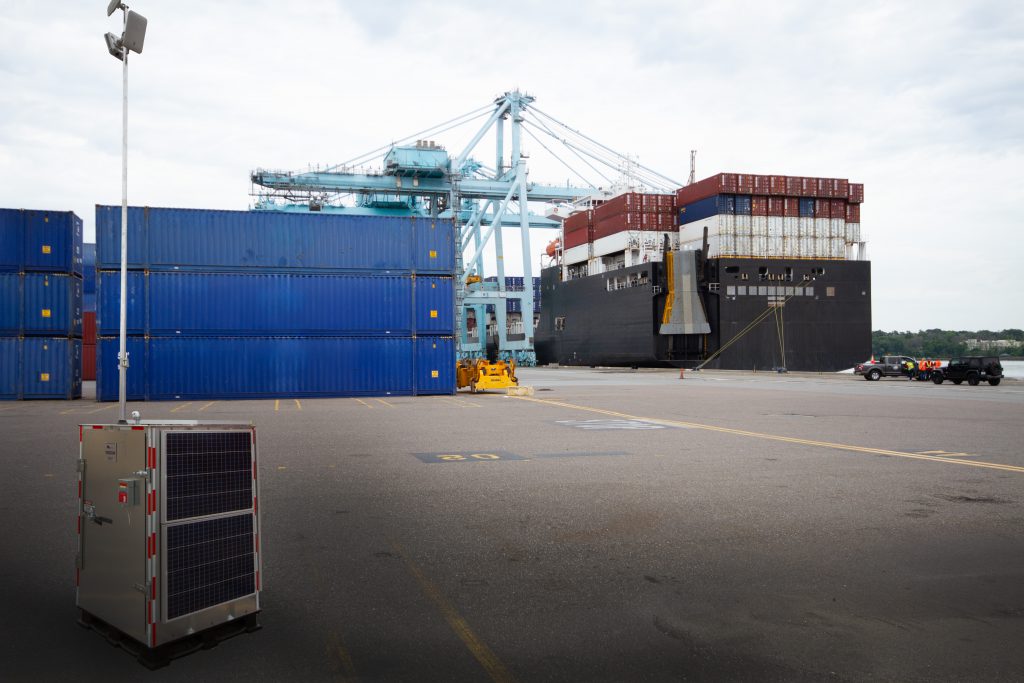
RapidOne provides fully standalone wireless connectivity through an attached 21-foot mast. Since these solutions are solar-powered and self-contained, they can be quickly deployed and moved in a matter of minutes or days and can be set up in difficult environments featuring gravel, uneven terrain, and exposure to extreme temperatures.
RapidMiniMax
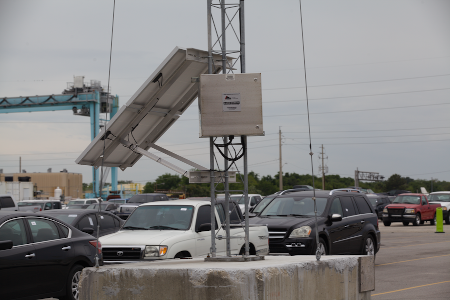
In ports where existing poles, towers, and other structures and surfaces are available, RapidMiniMax can be installed to turn these vertical assets into parts of your Wi-Fi infrastructure.
RapidMiniMax, which was originally deployed for port customers, can run on AC power or solar. It can be quickly deployed to improve wireless connectivity in your yard.
RapidFixed
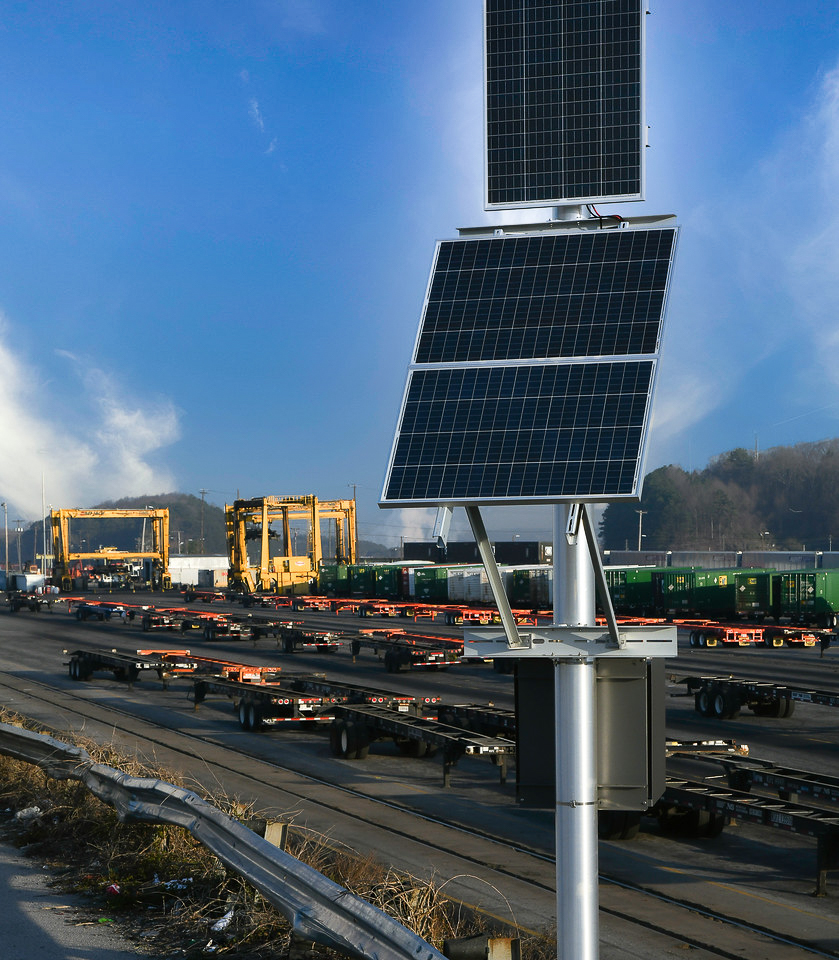
For port environments seeking permanent wireless infrastructure with minimal installation costs, RapidFixed is a scalable, cost-efficient connectivity solution designed specifically for dynamic terminal environments.
Originally deployed for our port customers, RapidFixed drills a single augured hole into the ground to install mix-mounted access points up to 35 feet off the ground—improving Wi-Fi access even among stacked intermodal containers.
How to get Started with Rapid Deploy
When a marine terminal is interested in using Rapid Deploy solutions for its wireless infrastructure, Buckeye Mountain’s experts have a streamlined, tried-and-tested approach to planning, designing, and testing each custom network before sending it out for deployment.
That process consists of the following stages:
- We use customer conversations to understand their unique needs and goals for deploying wireless infrastructure in their environment. These priorities guide our in-house design and build of the wireless network using whichever Rapid Deploy products are best suited to facilitating fast, consistent Wi-Fi coverage in the marine yard.
- Once the network is built, we bring in a team of engineers to configure, stage, and thoroughly test the infrastructure. This testing period, which can range from one week to one month, allows all of the networking hardware to “burn-in,” giving engineers a chance to identify any hardware defects that may create connectivity issues when placed under the strain of an outdoor terminal environment.
- After the burn-in period, we conduct a final round of testing to ensure that all solutions are in proper working order.
- We carefully break down the networking setup, package it securely to prevent any damage during transit, and ship the solutions out to the terminal site where our boots-on-the-ground team members can ensure a smooth deployment.
The Buckeye Mountain Difference: World-Class Support and a Design-First Approach
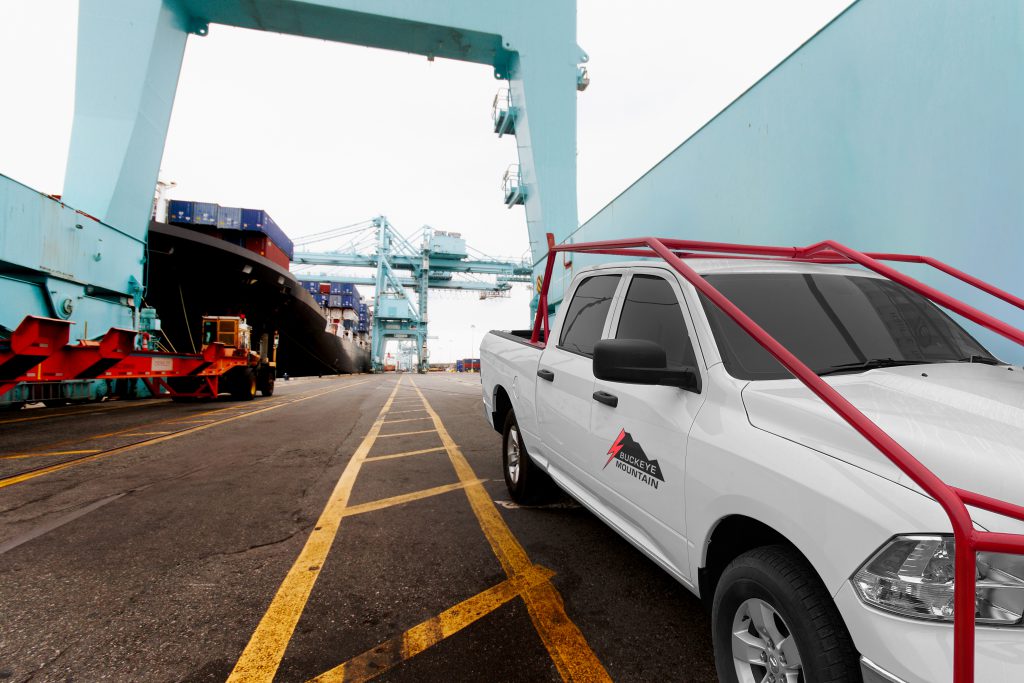
The value of working with Buckeye doesn’t stop with our Rapid Deploy family of products. Just as great wireless connectivity depends on a solid infrastructure, our Wi-Fi network deployments are backed by a responsive, supportive customer experience.
When you’re a Buckeye Mountain customer, you’re never on your own. From remote support to boots-on-the-ground assistance, we’re a partner in your operational success.
“One advantage of Buckeye is that we’re small enough to dedicate resources where they’re needed most, yet large enough to have those resources distributed and ready to deploy quickly,” says Crooks.
Meanwhile, our proactive mentality for designing solutions ensures that your networking technology can maximize its long-term value to your organization.
“The more proactive monitoring and maintenance you perform, the less you need to rely on being completely reactive,” says Crooks. “This principle is central to our support team’s approach. They are trained to focus on proactive measures to identify and address potential issues before they escalate and disrupt operations.”
James Crooks, Senior Solutions Architect at Buckeye Mountain
Unlock New Efficiencies Across your Rail Yard Operations
Poor connectivity is a drain on your day-to-day operations, leading to more stoppages, disruptions, frustration, and less revenue for your terminal.
The status quo is no longer acceptable. With our Rapid Deploy family of products, Buckeye Mountain can deliver fast, flexible, and scalable wireless infrastructure that benefits every facet of your day-to-day operations.
And, with Buckeye Mountain’s expert support, you can enjoy peace of mind knowing your networking system will be perfectly configured for your environment.
DIY vs Buckeye ‘Cradle to Grave’: What’s the Best Approach to Terminal Hardware Lifecycle Management?
DIY vs Buckeye ‘Cradle to Grave’:
What’s the Best Approach to Hardware Lifecycle Management?
Mobile computers and other specialized hardware have delivered powerful new capabilities that improve speed, efficiency, and productivity in rail and port terminals. But realizing the value of your hardware investment isn’t as simple as buying tablet devices and placing them in the hands of field operations teams.
Devices require constant management and maintenance to keep them in proper working order. Terminals require durable hardware that can withstand the wear and tear of a rugged work environment—and even then, those facilities need a plan to repair and replace damaged assets. And personal devices must be constantly managed and monitored to make sure they’re used in alignment with company policy.
All of these ongoing tasks fall under the umbrella of hardware lifecycle management—a strategic framework for maximizing the ROI of your terminal’s technology investments. Effective hardware lifecycle management improves the longevity, availability, and performance of your terminal hardware, which in turn delivers tangible performance gains for your field operations teams.
Terminals have two options for implementing hardware lifecycle management:
- DIY: Your in-house technical teams handle everything on your own: hardware deployments, device management, software updates, repairs, and everything in between.
- Working with a lifecycle management partner: At Buckeye Mountain, for example, our cradle-to-grave approach encompasses the full lifecycle for every hardware solution. From creation to disposal, we manage the full lifecycle thoughtfully and responsibly, ensuring it aligns with your operational and environmental goals.
Let’s dive into the pros and cons of each approach—and lay out the business case for partnering with Buckeye Mountain.
What it Means to Tackle Lifecycle Management with a DIY Approach
Businesses that handle hardware lifecycle management in-house must pull from their existing personnel and resources to enable this strategic framework.
Inadequate resource support can undercut the effectiveness of DIY lifecycle management. This lays the groundwork for a number of issues which can impact the cost and value of these hardware investments:
Higher Rates of Hardware Downtime
One of the core objectives of lifecycle management is to maximize the availability of hardware for your field ops teams.
Equipment breakdowns, malfunctions, and device damage are inevitable in challenging rail and port environments. Any instance of hardware downtime can impede operations and overall business performance.
“Speed is critical because it equates to minimal downtime—especially when dealing with rail and port terminals. In a rail yard, even 10 minutes of downtime can feel like a significant stoppage for workers on the ground and can have costly effects on a terminal.”
Erica Toney, Southeast Operations Manager at Buckeye Mountain
An Increase in Worker Distractions
In a DIY scenario, hardware distractions can come in two forms.
The first is the amount of time workers end up spending to manage hardware and software on their own instead of fulfilling their primary work responsibilities. These management tasks cancel out some of the productivity gains of the hardware—while also increasing the risk of human error in hardware management.
In some cases, workers may use these devices to access applications or other content that is prohibited on the job site.
“In a rail yard, you can’t have a train and engine employee—someone responsible for counting and assessing train cars—standing there watching YouTube on an iPad,” says Toney.
But without access to industry-leading mobile device management systems and other remote device management capabilities, DIY lifecycle managers may not have the tools they need to enforce these device policies.
Excessive Repair and Maintenance Costs
Without a readily available, scalable process for handling hardware maintenance and repairs, the DIY approach is likely to result in high repair and maintenance costs that impact your organization’s capital budgets.
If organizations don’t anticipate these costs and allocate an appropriate budget, DIY lifecycle managers could face situations where their capital budget is exhausted before the year’s end, resulting in longer delays for device repairs and even higher rates of equipment downtime.
Even with a budget in place, the lack of proven, efficient repair and maintenance processes is almost certain to inflate the cost of performing these services in-house.
What Terminal Workers can Accomplish When They Aren’t Tasked with DIY Lifecycle Management

In-house lifecycle management may seem more affordable because it doesn’t create a new line item expense. But the apparent up-front savings of a DIY approach only ends up stealing resources and productivity away from other parts of your operations, forcing terminal workers to set aside other responsibilities that are essential to yard operations.
By lifting the burden of a DIY strategy, those workers can then prioritize their core requirements and contribute to other key terminal initiatives, including the following:
Uninterrupted service during natural events
A severe storm or other natural event can threaten a terminal’s ability to maintain operations. When lifecycle management is being handled in-house, terminal workers may need to focus on getting devices and systems back online to mitigate downtime and keep operations running.
But with a partner like Buckeye Mountain managing this hardware, terminal workers can instead focus on performing their regular tasks. Buckeye can manage everything remotely, and terminal operations can proceed uninterrupted.
“We work closely with our customers—not just on the hardware side, but also to ensure failovers are in place for situations beyond their control,” says Toney. “We understand that outside of the day-to-day hardware support involved in lifecycle management, there are mission-critical scenarios where operational continuity is non-negotiable.”
Ensuring Compliance with Rail Operations Regulations
As terminals move from paper to electronic documentation, materials like rule books and safety documents must always be accessible. This access needs continual oversight to ensure that a failed app update or other technical issue doesn’t restrict access to essential materials.
DIY lifecycle management often leans on terminal workers to make sure this documentation is available—instead of using that documentation to support terminal safety and other compliance requirements.
With a partner like Buckeye managing devices remotely and ensuring continual access, terminal workers can spend more of their time using that documentation to enable more efficient, compliant operations.
The Benefits of Outsourced Lifecycle Management: What Buckeye Mountain Brings to the Table
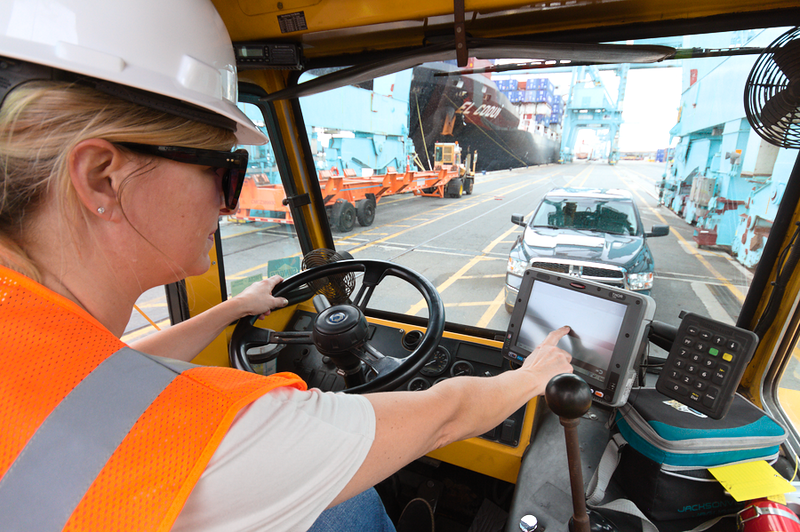
Terminal hardware is a significant investment. A lifecycle management partner like Buckeye Mountain can help you maximize the ROI of that investment, equipping your organization with operational efficiencies, hardware expertise, and agile support that would be infeasible and unsustainable to allocate internally.
Here’s what you can expect from Buckeye Mountain’s cradle-to-grave lifecycle IT services:
Exceptional Customer Service and an Agile Approach
Hardware lifecycle management is a big part of what we do. Whether you’re faced with managing inventory, configuring devices, coordinating repairs or deploying new devices, Buckeye can do it faster and more efficiently than your in-house personnel—even when your needs arise outside of traditional working hours.
“Our commitment to exceptional customer service is evident in both our business-hour service centers and our 24/7 support operation center, which all thrive on Buckeye’s customer-first culture,” says Toney. “This approach exemplifies how we efficiently manage the speed and demands of hardware lifecycle management.”
As terminal technology and hardware infrastructure evolve, Buckeye Mountain also retains the agility to help address emerging changes and seize opportunities to procure new hardware that best serves your facility’s long-term goals.
“Our customers are understandably focused on their day-to-day operations—which means they aren’t always paying attention to the long-term trajectory of their technology, including whether devices are outdated or approaching the end of their lifespan,” says Toney. “Part of our ‘cradle-to-grave’ approach involves keeping track of devices and operating systems nearing the end of their life cycles while understanding the future of projects so we are able to set our customers up for seamless transitions into new hardware rollouts.”
Erica Toney, Southeast Operations Manager at Buckeye Mountain
Timely Device Management and Repair
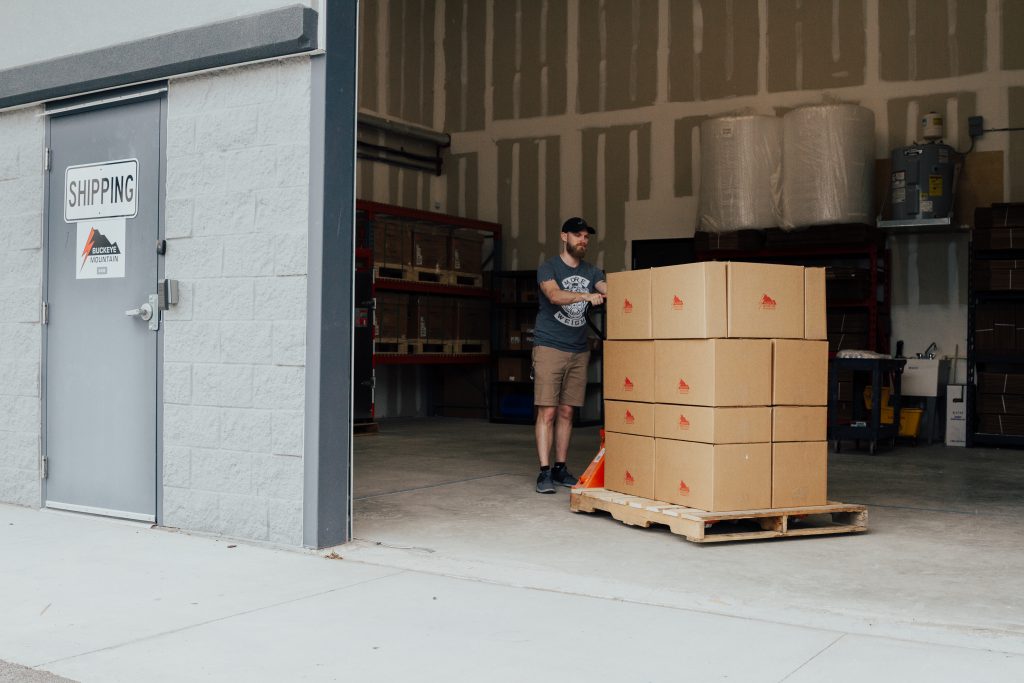
Buckeye Mountain takes on all responsibility for device management and repair. Our scalable device service allows for fast, cost-effective repairs that spare our customers the headache of worrying over unexpected hardware costs. We execute repairs quickly to minimize device downtime and keep terminal operations rolling.
“For us, this means offering same-day shipments for devices when needed, immediate remote support for resolvable issues, and being consistently accessible during operational hours,” says Toney. “This approach exemplifies how we efficiently manage the speed and demands of hardware lifecycle management.”
An Unmatched Partner, from Procurement to Replacement
Our lifecycle management services are comprehensive. We don’t leave any gaps for our customers to fill, and we pride ourselves on being a technology partner that adds value at every stage of the hardware lifecycle.
“A true partnership means both parties are equally invested in the success of the relationship,” says Toney. “At Buckeye Mountain, we’re deeply integrated into our customers’ experiences. We’re part of their successes and their challenges. We remain fully engaged throughout every phase of the lifecycle management process, ensuring we’re not just a vendor but a true partner in their technology journey.”
Erica Toney, Southeast Operations Manager at Buckeye Mountain
Manage hardware lifecycles at your own risk
Effective lifecycle management isn’t something you can piecemeal from your existing internal resources. It requires expert oversight, long-term strategic planning, and the freedom to quickly take action at scale without interfering with terminal operations.
A DIY approach puts your hardware ROI at risk—and could lead to a plague of inefficiencies and disruptions spilling over into your terminal operations. Buckeye Mountain can help you avoid this outcome while enabling the efficiencies, productivity gains, and long-term cost controls you envisioned when investing into upgraded terminal hardware.
Put your trust in Buckeye Mountain’s lifecycle management expertise.
Before You Buy: Considerations for Upgrading and Replacing Terminal Hardware
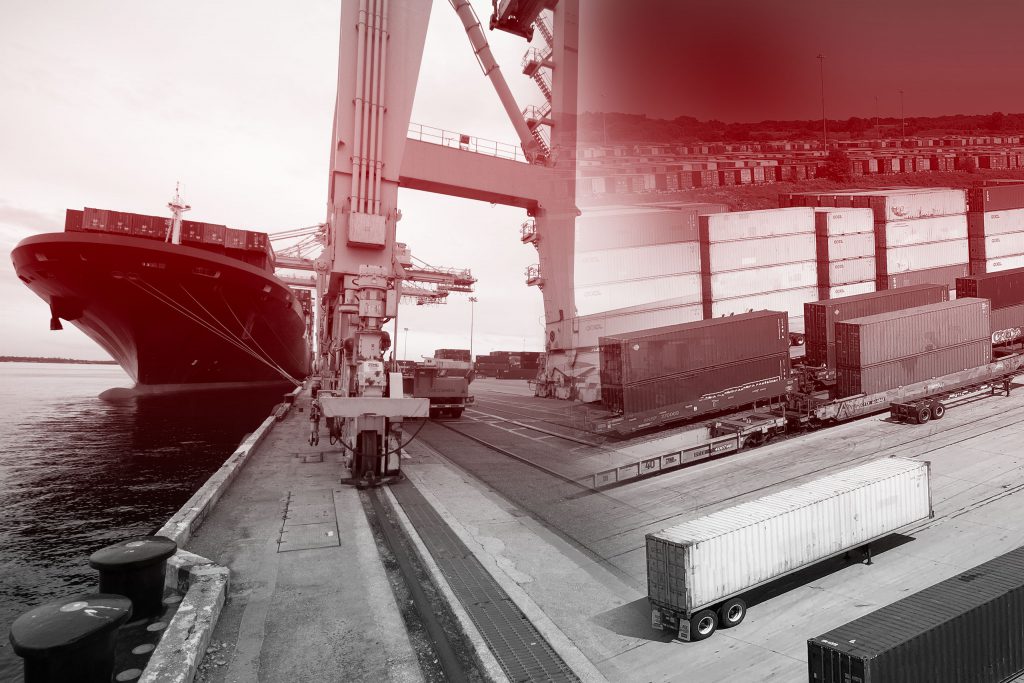
BEFORE YOU BUY: Considerations for Upgrading and Replacing Terminal Hardware
Equipment breakdowns are part of daily life on marine and rail terminals, as is purchasing and installing new terminal hardware to replace outdated and defunct equipment. Procurement managers purchasing equipment are often faced with an all-too-common scenario: take all equipment training, maintenance, and repairs in-house or feel locked into a vendor-specific support agreement when purchasing that equipment.
It’s only later—often a few months after declining offers of additional ongoing vendor support—that they return to the vendor in search of faster, cheaper, and more consistent support than what their in-house professionals or hardware-specific vendors can provide.
“When you add maintenance and repair to the workload of in-house technicians, you end up pulling resources away from core operations,” says David Fajardo, Manager of Field Technical Services at Buckeye Mountain. “Suddenly, there’s a man-hour cost to fixing hardware on top of the operational cost of equipment downtime—which turns every small problem into a five-alarm fire.”
The difficulty of maintaining equipment internally only increases over time. Terminal operating systems are becoming more intelligent and more complex—so is the new equipment deployed on the terminal. As a result, maintaining and repairing this equipment has become a heavier lift, increasing the strain placed on in-house technicians.
Buckeye Mountain’s field technical support services are designed to alleviate this burden, freeing up in-house technicians and resources to focus on supporting the terminal’s core operations. Terminal managers can coordinate planned, strategic equipment updates that prevent resource exhaustion and operational downtime by outsourcing equipment maintenance and repair to a trusted partner.
Read on to find out how our “boots on the ground” approach can help improve equipment availability and long-term value at your terminal while supporting better distribution, logistics, and other operational efficiencies for your customers.
Understanding the Strategy Behind Purchasing the Hardware
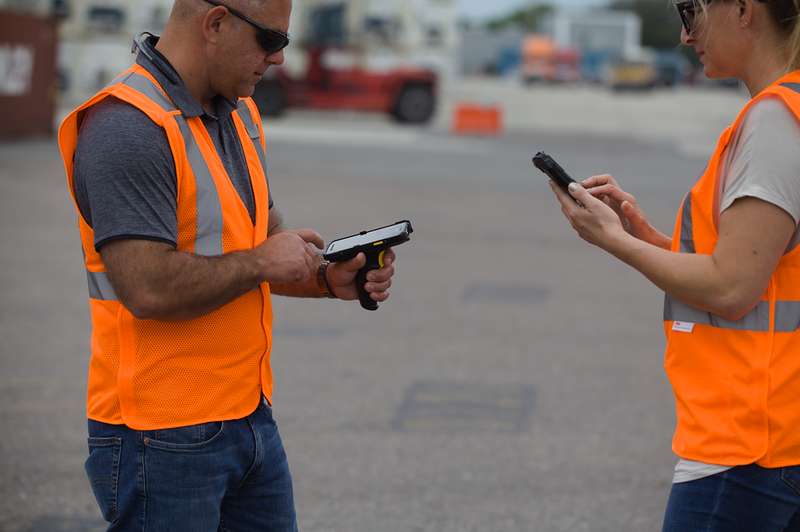
Purchasing the right hardware is only part of a successful procurement process. Before that purchase, procurement leaders face several strategic decisions that will affect the performance and value of that equipment throughout its lifespan.
By making these decisions ahead of your purchase, procurement managers can work with field operations leaders to determine the best approach for managing the equipment’s maintenance, repairs, asset management needs, and technical support.
Maintenance Plan and Warranty
Maintenance plans and equipment warranties help set the foundation for the long-term value you create from your hardware investment.
Warranties protect your company if your new equipment doesn’t meet quality assurance expectations. Meanwhile, a robust maintenance plan is critical to ensuring hardware receives preventative maintenance that reduces equipment failures and operational downtime.
“With almost any hardware installation we perform, we try to set up some sort of preventative maintenance plan,” says Fajardo. “You always want to correct issues before they become a problem.”
Before purchasing your hardware, find out if preventative maintenance is included in the purchase to maximize the longevity and reliability of your asset. Review your warranty carefully to understand the type of coverage you can expect if problems arise within the warranty period.
Asset Management
A comprehensive asset management strategy is critical to tracking hardware maintenance and servicing across the asset lifecycle. This is particularly important for terminals tracking many pieces of hardware facing unique maintenance needs and different stages of their lifecycles.
Whether your on-site field operations team or a third-party service provider handles your asset management, ensure you have a clear plan for managing new hardware purchases alongside your existing technology.
Regular hardware auditing should be a subset of your asset management strategy. Hardware auditing helps you track physical assets that you may reallocate within the terminal, and it supports preventative maintenance by making sure upcoming parts replacements and other asset management tasks are performed on schedule.
These audits are necessary to confirm that all equipment operating at your terminal is still meeting expectations regarding performance, efficiency, and any applicable compliance requirements.
Configuration and Repairs
Routine configuration of equipment ensures that your hardware is optimized for peak performance. Hardware relocated or utilized for a new purpose may need to be configured to its new environment and requirements.
Hardware configuration and repairs can disrupt your terminal’s work environment. Strategic planning is needed to coordinate repairs and servicing so that operations experience minimal disruption, if any.
Terminals tasking hardware configuration and repairs to in-house technicians may face a greater risk of disruption due to limited labor and resource flexibility: since in-house technicians are juggling hardware repairs alongside a laundry list of other responsibilities, they may not have the luxury of scheduling repairs during periods of non-peak workloads for the facility. Disrupted operations can increase material costs for your customers and the facility itself.
Tech Support and Downtime
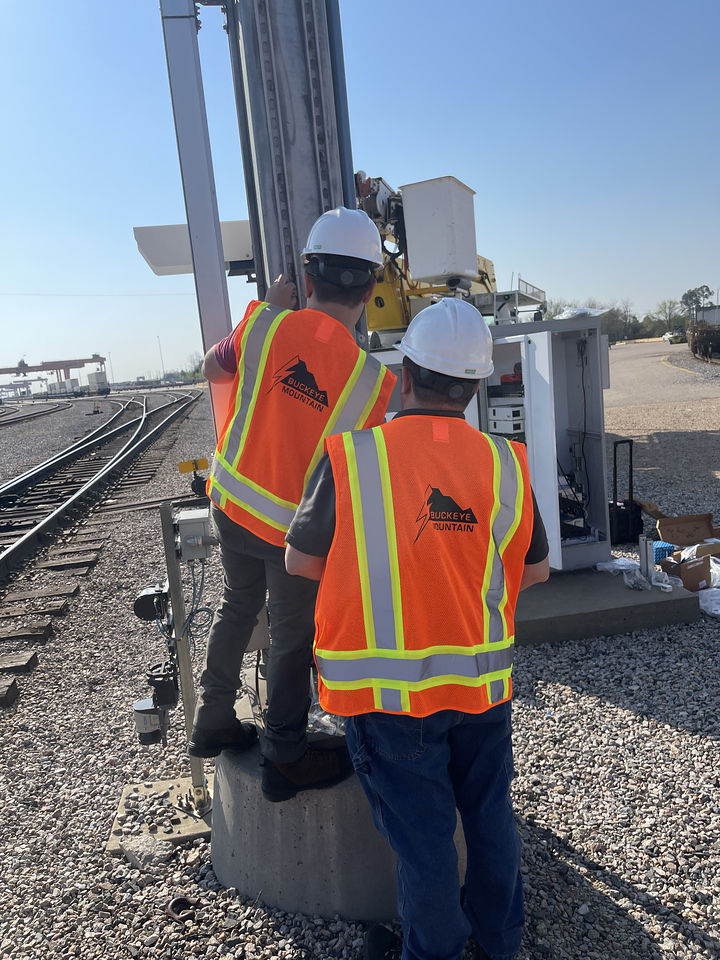
Equipment failures and other hardware issues can have a disastrous impact on terminal operations, resulting in significant outages that bring operations to a halt and cost the facility—and its customers—revenue.
When technical issues arise, a single in-house technician often needs more resources and bandwidth to quickly resolve the issue, leading to extended downtime and mounting financial losses. Professional support services, like Buckeye Mountain, on the other hand, are better equipped to respond with multiple technicians in the field who can quickly resolve the issue and bring your equipment back online.
“Technical issues can be a daily occurrence at some terminals, and many of these issues must be addressed manually by on-site technicians,” says Fajardo. “Since Buckeye knows how to install this hardware correctly, though, we’re able to reduce the frequency of these issues—and if something goes wrong, we’re right there to help.”
Accounting for Long-term Cost vs. Long-term Value
Equipment costs don’t end when you purchase your new hardware. But, the expense incurred over that equipment’s lifespan depends on your strategy for handling maintenance and repairs, minimizing equipment downtime, and maximizing the lifespan of your assets.
Higher costs don’t always result in less value for your investment. With equipment servicing, the opposite is often true: proactive spending for preventative maintenance and repair can substantially increase potential value creation from your equipment.
Procurement managers can help optimize costs and maximize long-term value potential by setting up an equipment servicing plan that prioritizes cost-efficient spending and long-term equipment health.
Increasing Longevity while reducing downtime
Equipment upgrades and replacements deliver an immediate impact to terminal operations. Even for procurement managers, it’s easy to get stuck on those short-term gains and overlook the long-term implications of that hardware investment.
In the end, though, the overall value each asset delivers for your organization will be determined by its longevity, long-term costs, and performance across the equipment lifecycle. Your equipment servicing plan directly affects each of these success metrics.
“It’s just like your car: If you take care of it, it’s going to last longer,” Fajardo says. “We’re like the mechanic working on your car: We keep the equipment well-maintained so that terminal operators get more longevity from each asset—and, in turn, get a better return on their hardware investment.”
According to Fajardo, this approach has enabled Buckeye Mountain to add years to the lifecycle of the customer equipment it manages. Thanks to Buckeye’s proactive maintenance, companies hoping to get five years of service out of a single asset regularly enjoy seven or eight years of service from that equipment.
The Impact of Repairs, Support, and Maintenance on Capital Budgets
Poor asset management practices can lead to inconsistent and delayed equipment maintenance, along with an increase in preventable repairs. These inefficiencies can result in budget overruns that leave your operations team with broken equipment and no room left in the budget for repairs.
In-house asset management can increase your organization’s exposure to these increased costs—especially if asset management is handled on a case-by-case basis when something needs repair. Since in-house technicians must juggle equipment maintenance and repair, among other tasks, costly delays are all but inevitable.
“We had one customer who moved away from our ‘boots-on-the-ground’ approach to bring asset management in-house and save on equipment servicing costs,” says Fajardo. “They quickly realized they lost a lot of asset management expertise that Buckeye Mountain brings to the table. We do things beyond scope to ensure our customers are taken care of—and we have an internal structure for managing assets that other companies can’t match.”
How Buckeye Mountain Adds Value
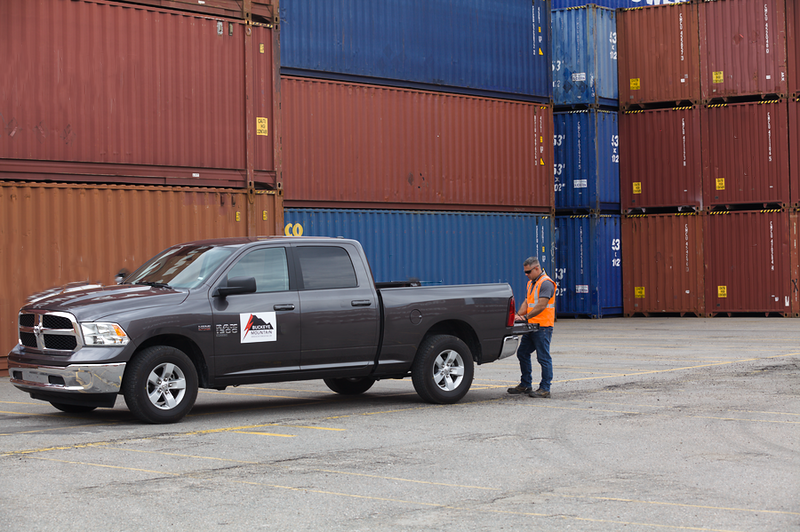
Outsourced equipment servicing not only helps you control hardware costs but also reduces the burden placed on in-house technicians.
It also allows your terminal to leverage the expertise of a service partner who can manage the entire equipment lifecycle for all of your assets—and do it better, more efficiently, and cheaper than your business could on its own.
When you choose Buckeye Mountain as your equipment service provider, you can expect the following:
Comprehensive Services
Buckeye Mountain is a value-added reseller across the rail, intermodal, and port industries. We offer competitive pricing and services tailored to your terminal’s unique needs.
When you contract with us as your equipment service provider, we work with you to develop a service plan that meets and exceeds your organization’s expectations. We go above and beyond our scope to deliver a turnkey solution that is flexible to your needs.
End-to-end Support
From product sourcing to lifecycle management, our service support covers equipment installation, training, maintenance, repair, and replacement—all to extend hardware lifespans, minimize operational disruptions, and maximize the value of your equipment investment.
Continuous Maintenance and Rapid Response
We quickly deploy a boots-on-the-ground presence when maintenance and repair services are required.
Our ongoing, on-site support provides continuous coverage for the full spectrum of equipment servicing needs, including rapid replacements and hardware upgrades to minimize downtime and ensure operational continuity.
Support Subscriptions for Managed Services
Expand your Buckeye Mountain service relationship by adding subscription options for 24/7 support. Our managed services can be configured to your facility’s unique needs, including remote and in-person support options.
We also offer coverage for a wide range of service needs, including network maintenance and equipment training.
Get the Most from Our Equipment Investment
Upgrading and replacing terminal hardware isn’t cheap. But if you don’t properly manage and maintain this new equipment, your long-term costs will soar—and the value of these assets will continue to decline until they reach the end of their lifecycle.
Buckeye Mountain can help you avoid this outcome. We provide a boots-on-the-ground presence to support your equipment across its lifespan, improving its longevity and availability while lowering costs and freeing up in-house resources.
Invest in your equipment by investing in Buckeye Mountain’s expertise.

